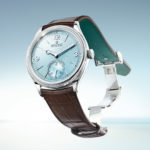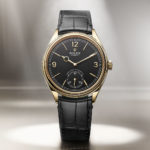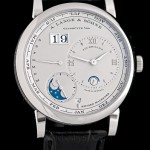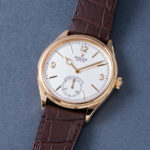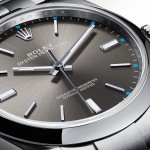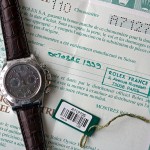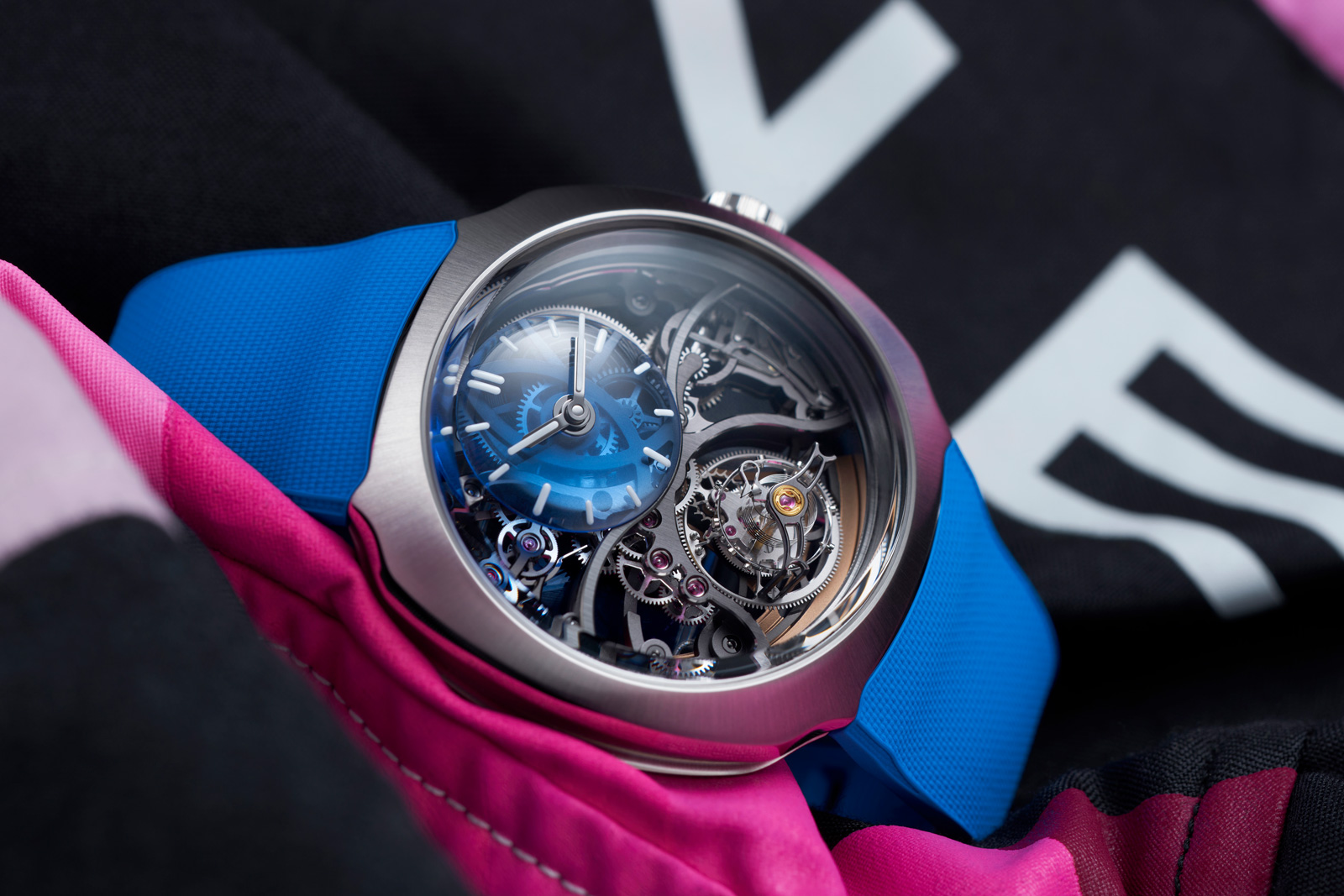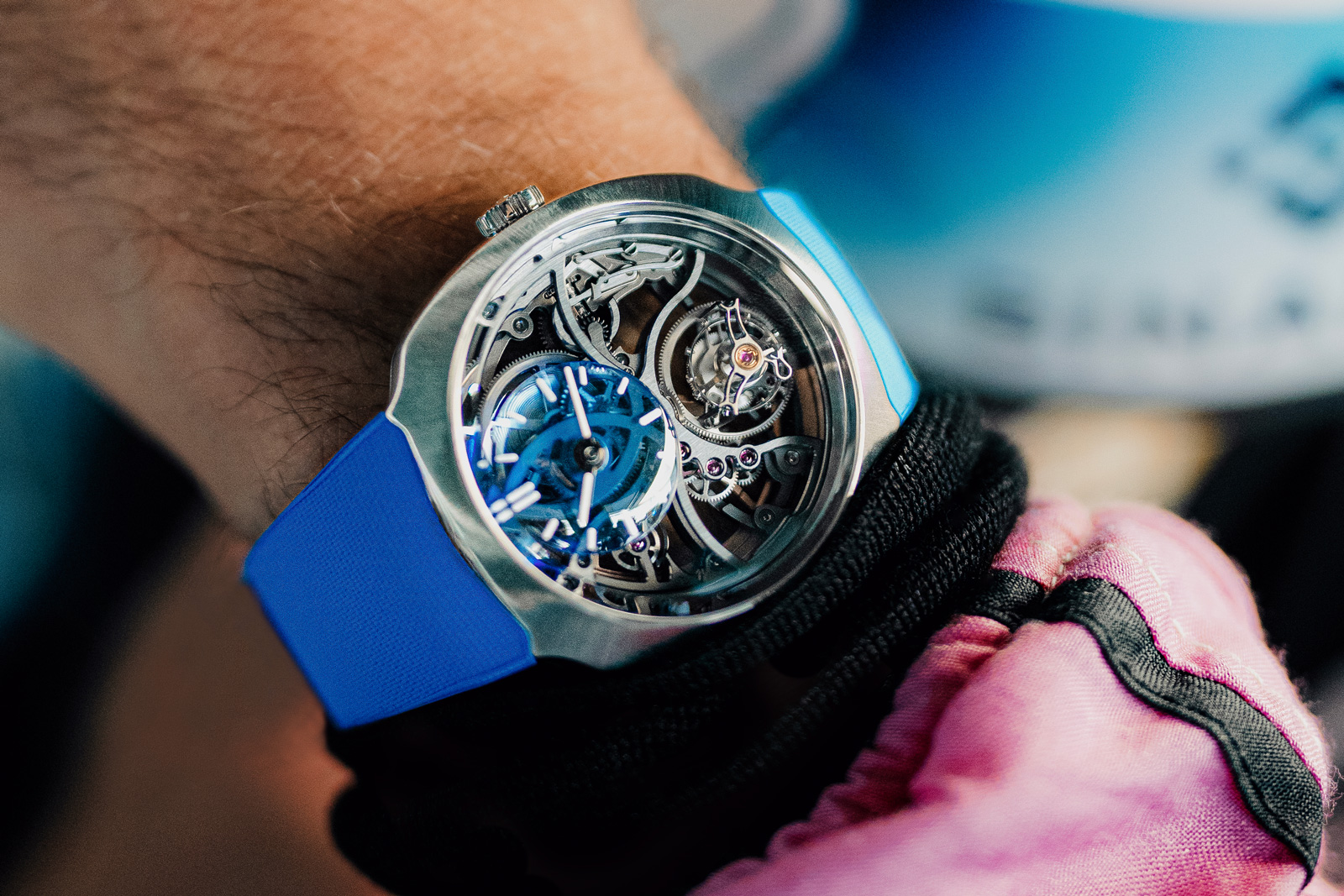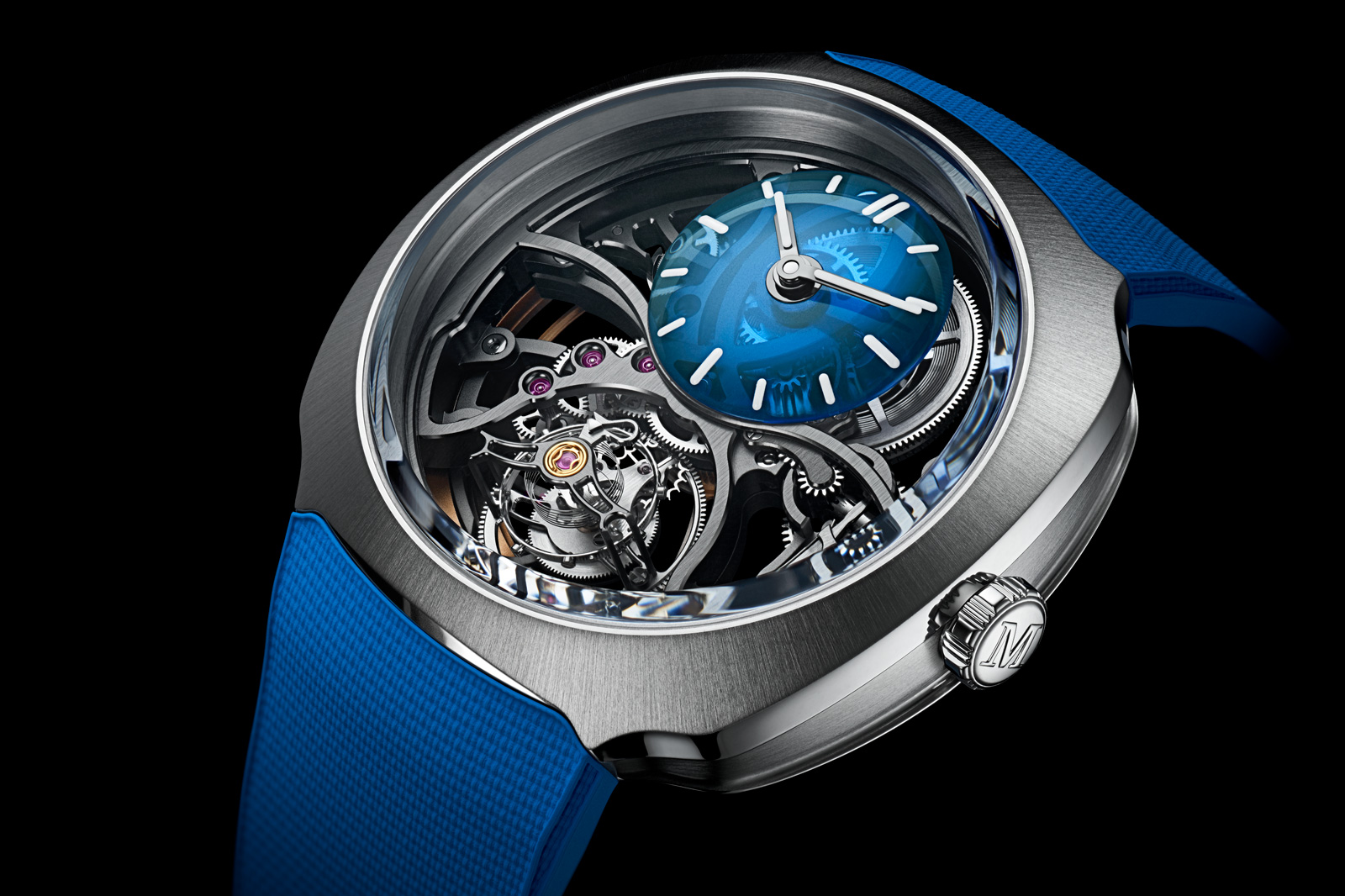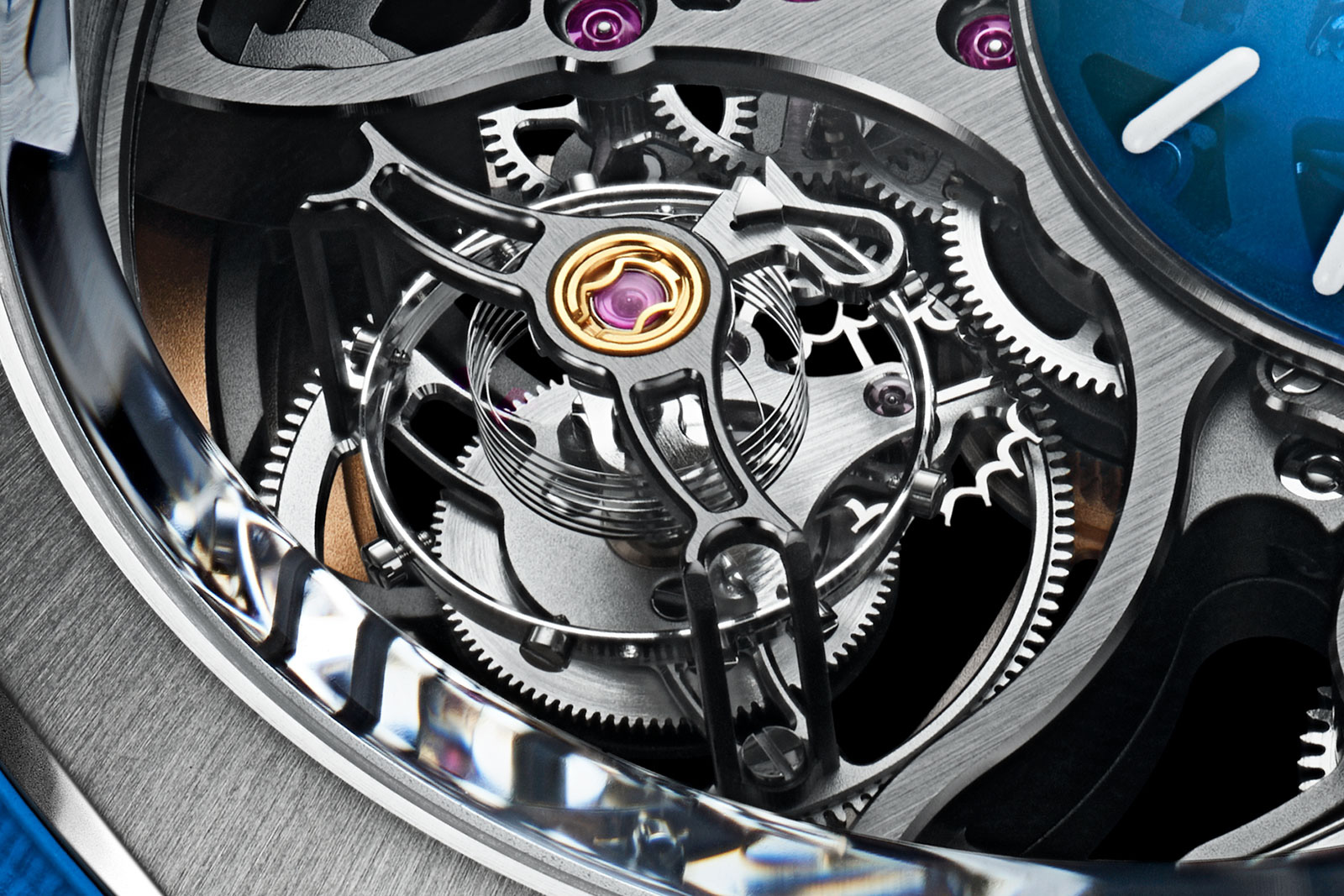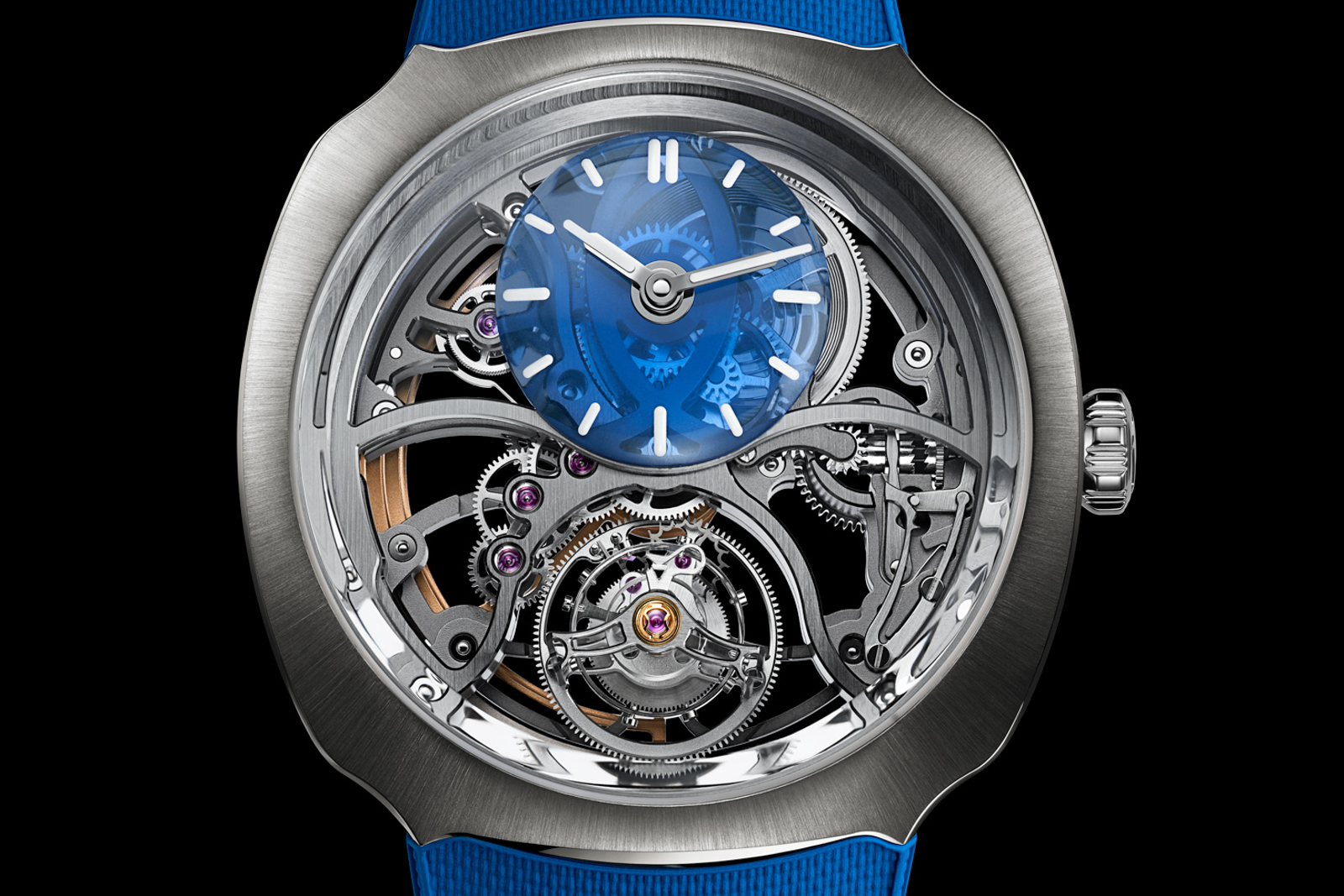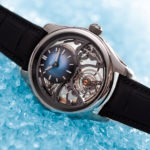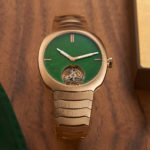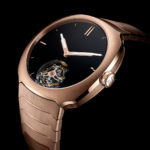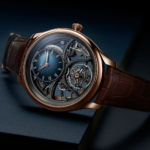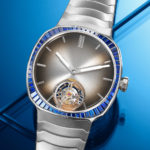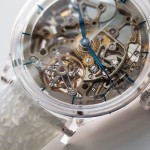Hands On: Rolex Perpetual 1908 in Platinum “Ice Blue”
The top-of-the-line Rolex dress watch.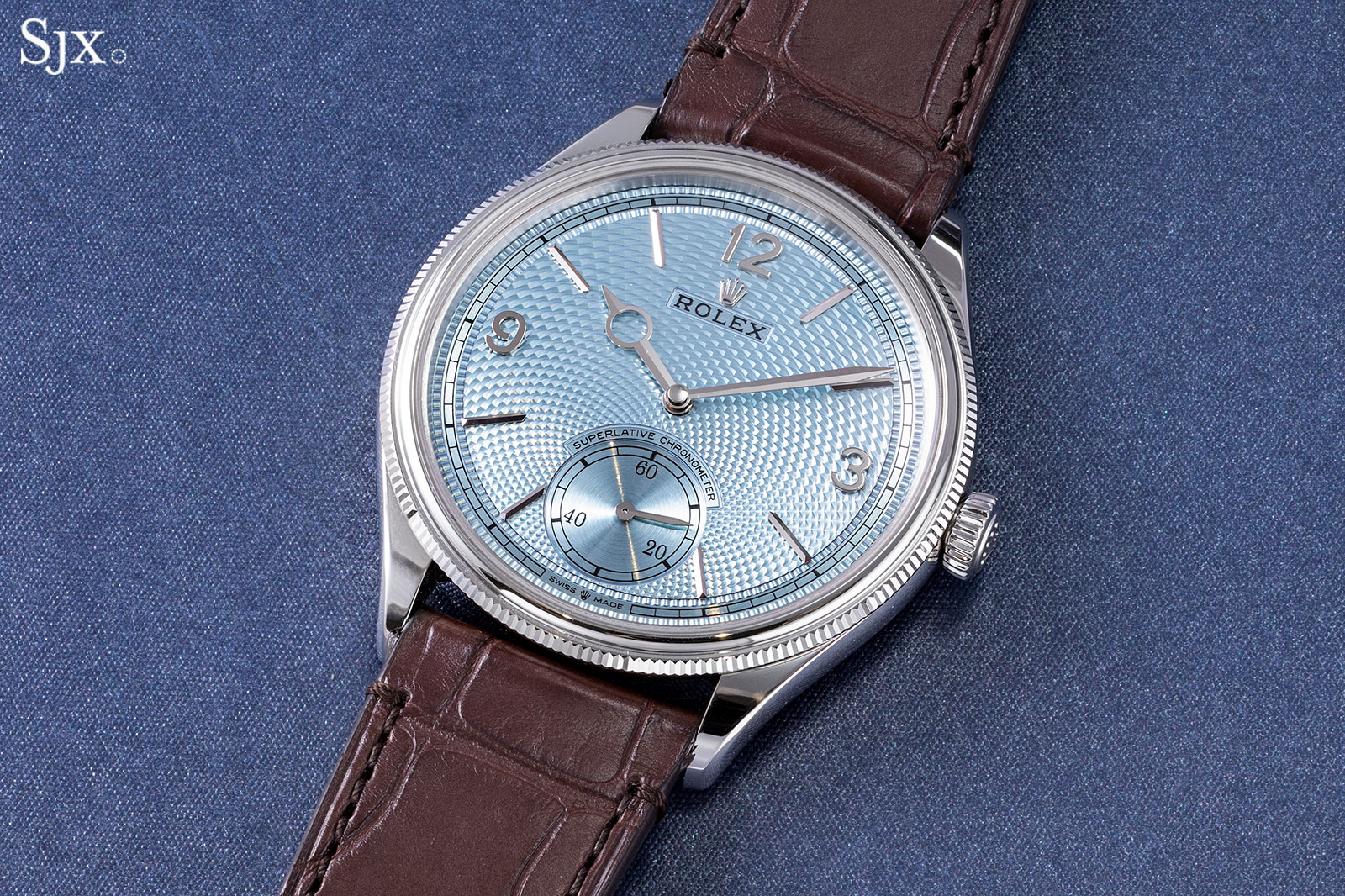
When Rolex surprised with the launch of the 1908 last year, we liked it – Brandon Moore wrote a positive review. Now Rolex has followed up with the Perpetual 1908 in platinum (ref. 52506) with an “ice blue” guilloché dial of notably high quality. Though identical in almost all respects to the versions in gold, the new 1908 is very different – and significantly more compelling.
Initial thoughts
Done the traditional way with a hand-operated machine, the guilloché dial gives the watch an entirely different character. The pale blue is also more modern and striking than last year’s colours, which were fairly old fashioned. At the same time, the dial has a slightly glossy finish that gives it an even brighter hue.
The guilloché transforms the dial, which was fairly staid in the earlier models. I would still do away with the peculiar hands inspired by the Submariner and other sports watches, but the dial is attractive as it is.
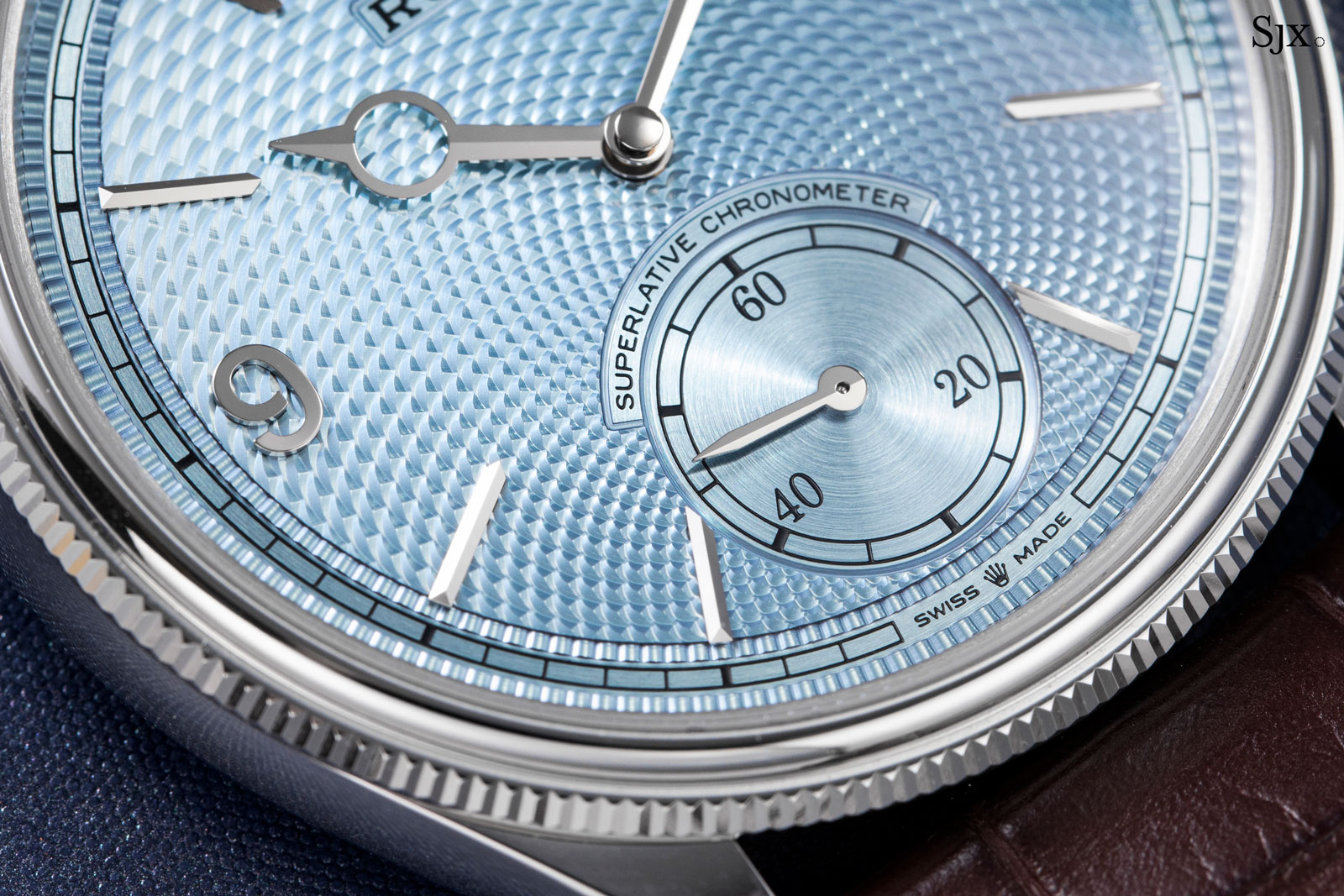
The dial is engraved on a hand-operated rose engine
Not only does it look better, the platinum 1908 also feels more appealing. It has the same slim profile as the gold versions, but has more heft thanks to the denser case material. More generally, it has the same tactile quality as all Rolex watches – it feels tangibly well made despite the compact size.
While the dial is impressive artisanal quality, the rest of the watch is outstanding industrial quality. Though the case is thin, it is exceptionally robust and solid, as is the screw-down crown. The 1908 arguably has best case of a dress watch in the market today.
All that comes at a price though. At just under US$31,000, it is a third more expensive than the same in white gold – which is actually a reasonable premium that is less than many brands levy for the metal. The difference is easily justified by the case material and guilloché dial, but the absolute number puts this in a segment where it is not the same affordable value proposition as its gold counterparts.
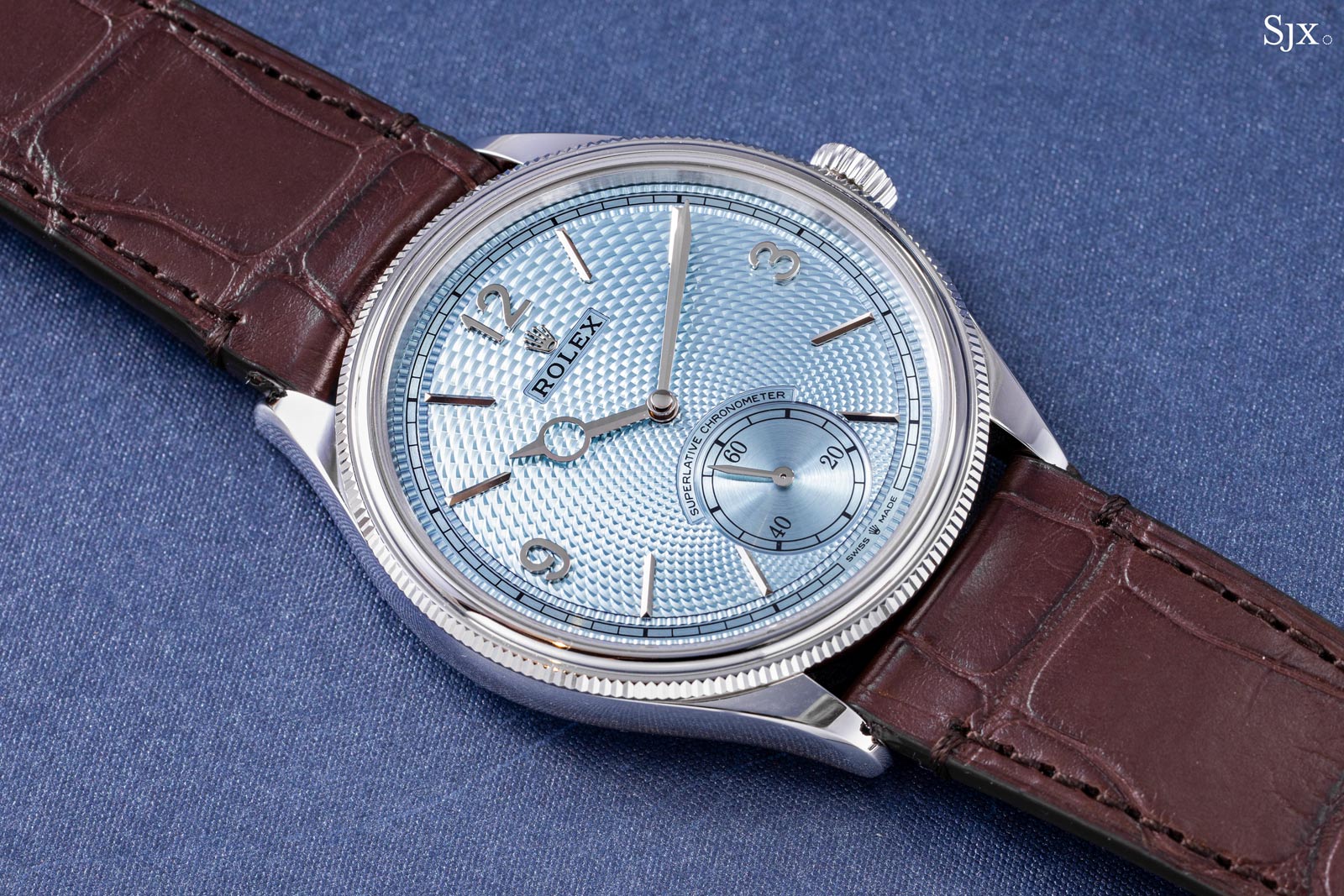

Whereas the gold 1908 costs about the same as a comparable Jaeger-LeCoultre Master and Breguet Classique, the platinum 1908 stands on its own. That isn’t so much a criticism as a reflection of its unique status as platinum dress watch.
Dress watches in platinum are unexpectedly rare. Patek Philippe only offers a handful, Lange used to offer more of them, while brands like Jaeger-LeCoultre and Breguet do not, leaving the 1908 in platinum as one of the few options on the market in the specific niche of platinum dress watches.
More generally, the platinum 1908 is also a notable product for Rolex. Though not the first time the brand has engine turned a dial, this continues something Rolex embarked upon last year with the hand-made cloisonné enamel dial of the Day-Date “Puzzle”. Though unlike the cloisonné dial that is in-house, the guilloché dial is done by an external specialist. I do like the direction, and I hope Rolex continues with such decorative dials.
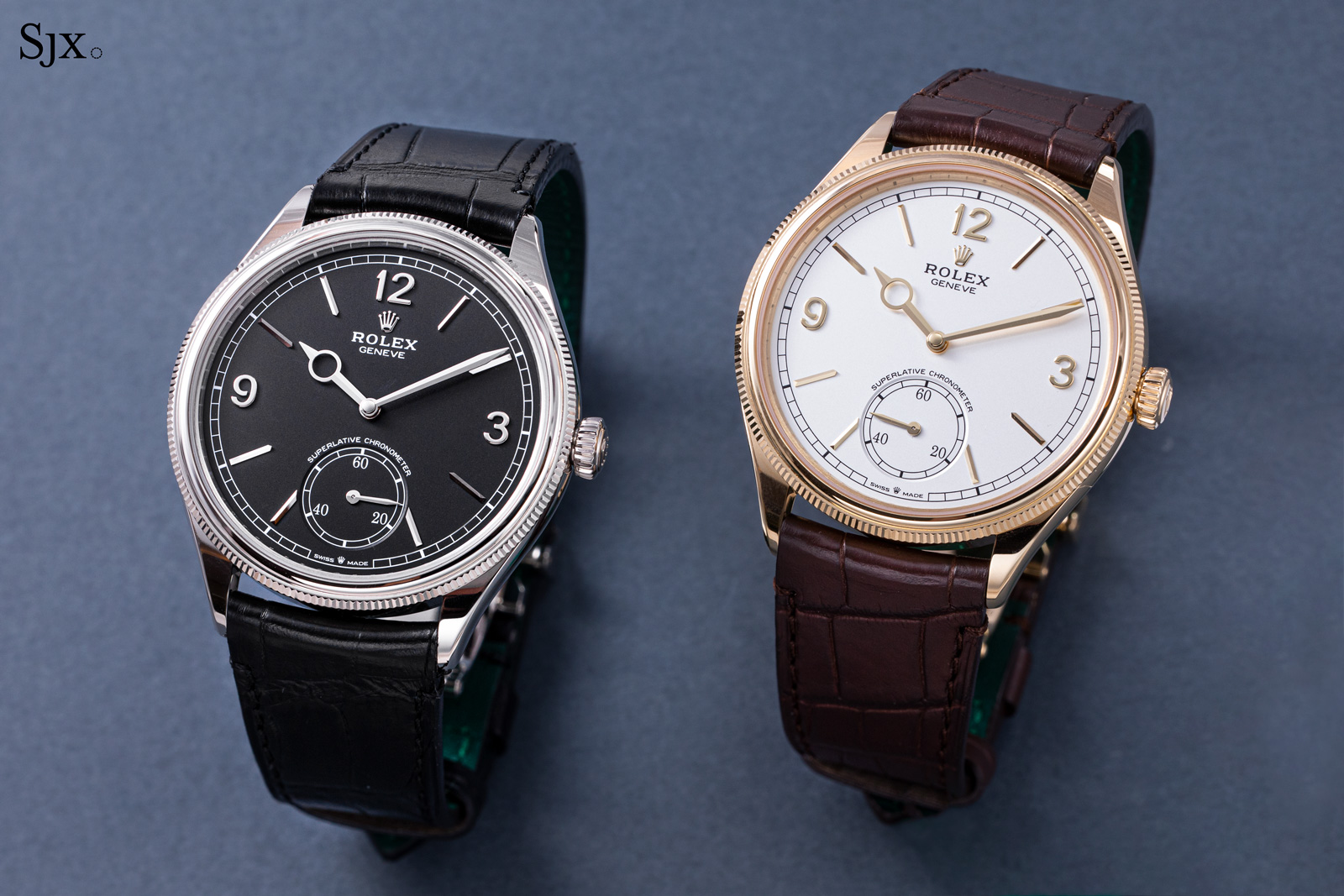
The first models of the Perpetual 1908 introduced last year in white gold (left) and yellow gold
Old-school engine turning
The dial is finished with a “rice grain” motif arranged radially with the pattern radiating outwards from the subsidiary seconds. It’s a traditional guilloché and certainly one that is suitable for a relatively low-key dress watch. But because it’s in “ice blue” rather than a classical silver, the engine turning feels a bit more modern than it otherwise would.
The glossy finish on the dial also leaves it unusually shiny that matches the highly-polished overall aesthetic, though I would have preferred a more matte finish.
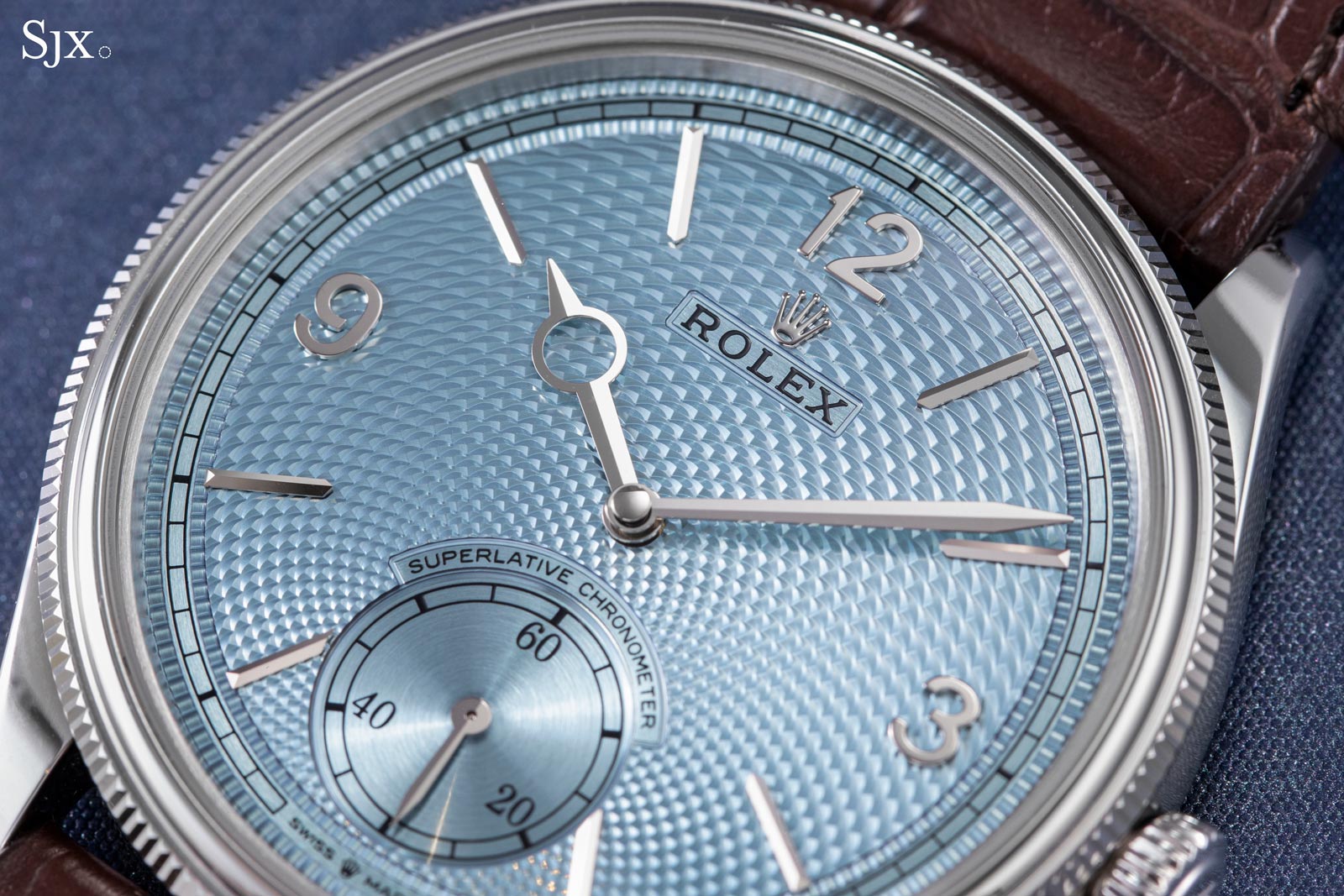
The hands and applied markers are all solid 18k white gold
The engine turning is the work of an unspecified specialist who does it the traditional way on a hand-operated rose engine that engraves the pattern on the dial. It’s a delicate, precise operation that demands completion without interruption.
Despite being a first for Rolex in its current catalogue, the guilloché dial is high quality and comparable to dials from high-end brands. Both the “rice grain” pattern and crimped borders are precisely executed. There are no flaws visible even under magnification, which is an achievement, particularly in the areas where flaws are often visible. In fact, it is done so well the dial could pass for one engraved by an automated milling machine.

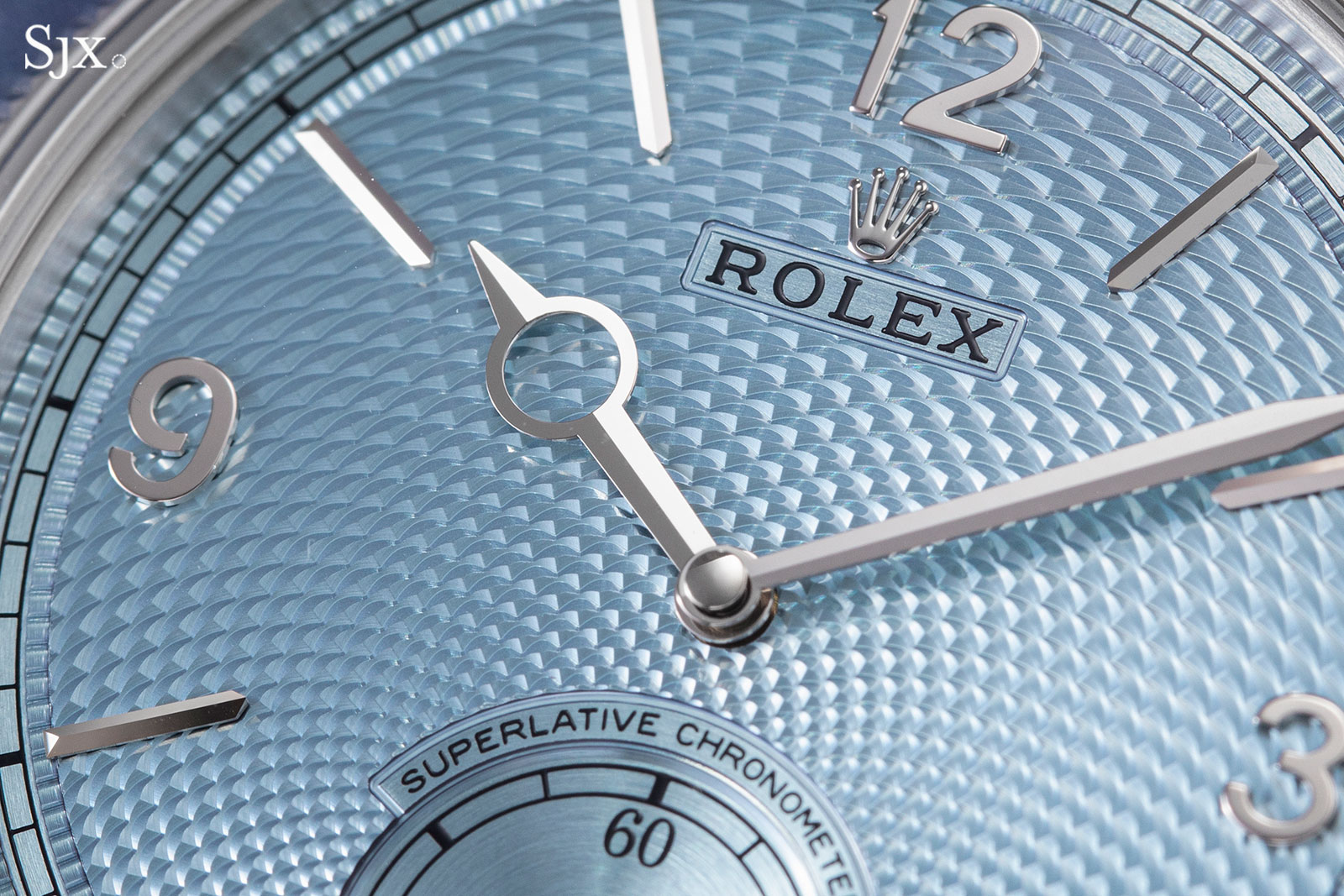
The recessed inserts on the dial for the brand name and seconds, however, are clearly done on a milling machine. These have clearly defined borders and a neat, brushed finish. It is also apparent that they are separate pieces, making the whole dial at least a three-part affair.
Because of the different finish, both of these sections don’t really look at home on the dial. A matching guilloché seconds, for example, would have been more complementary.
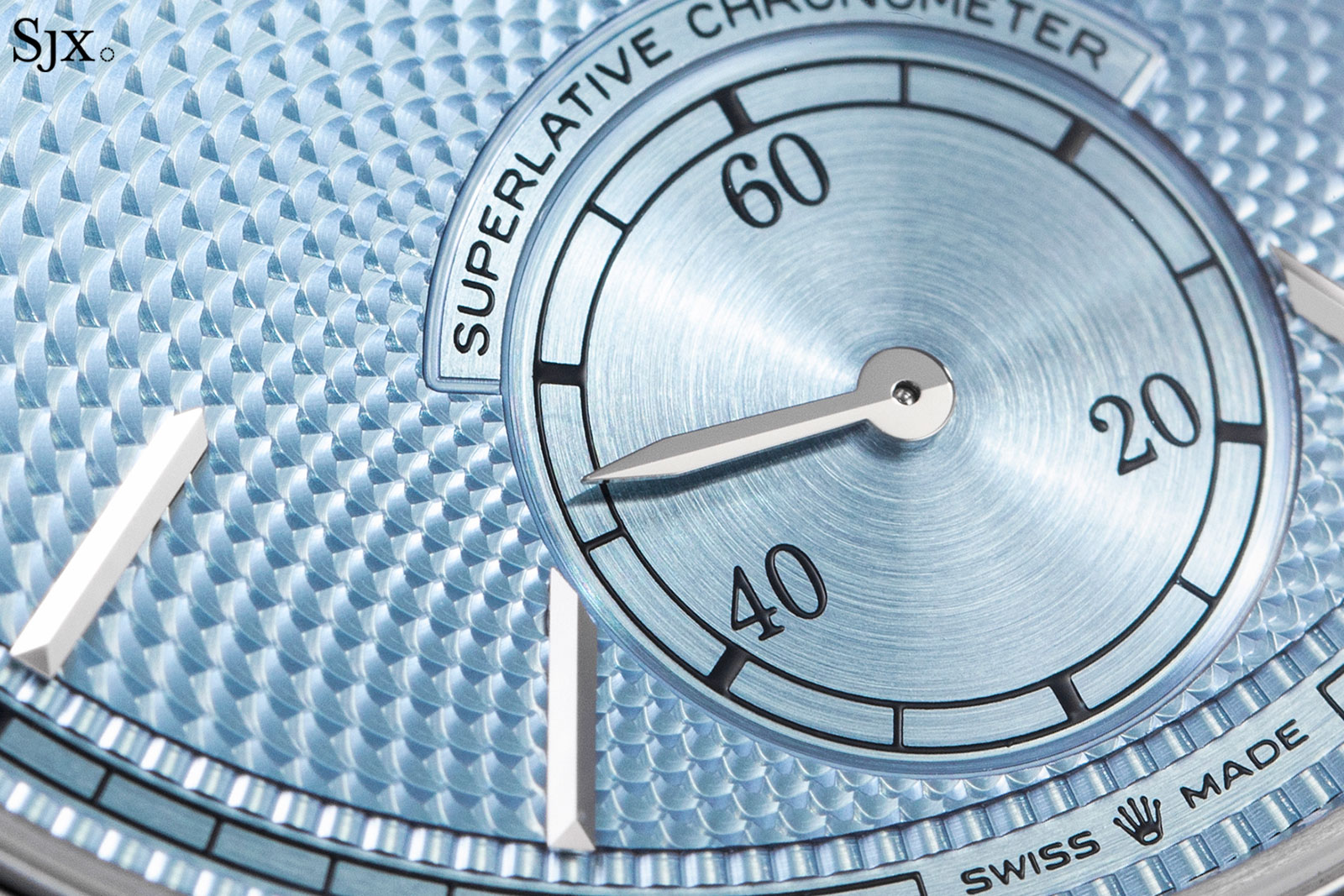
Lustrous metal
In its original form, the 1908 had excellent proportions for a modern-day dress watch. It is 39 mm wide and 9.5 mm, not too big and not too small, though it is the thinnest watch in the current Rolex catalogue. Those dimensions give it an elegant profile on the wrist, though the watch is not exactly discreet because of how shiny it is.
But in platinum the 1908 feels like a substantially different watch. Platinum is about a quarter denser than 18k gold, and that is evident when holding the watch in hand, especially since the folding clasp is also platinum. The feeling of weight is pleasant, almost like a tangible expression of its quality.
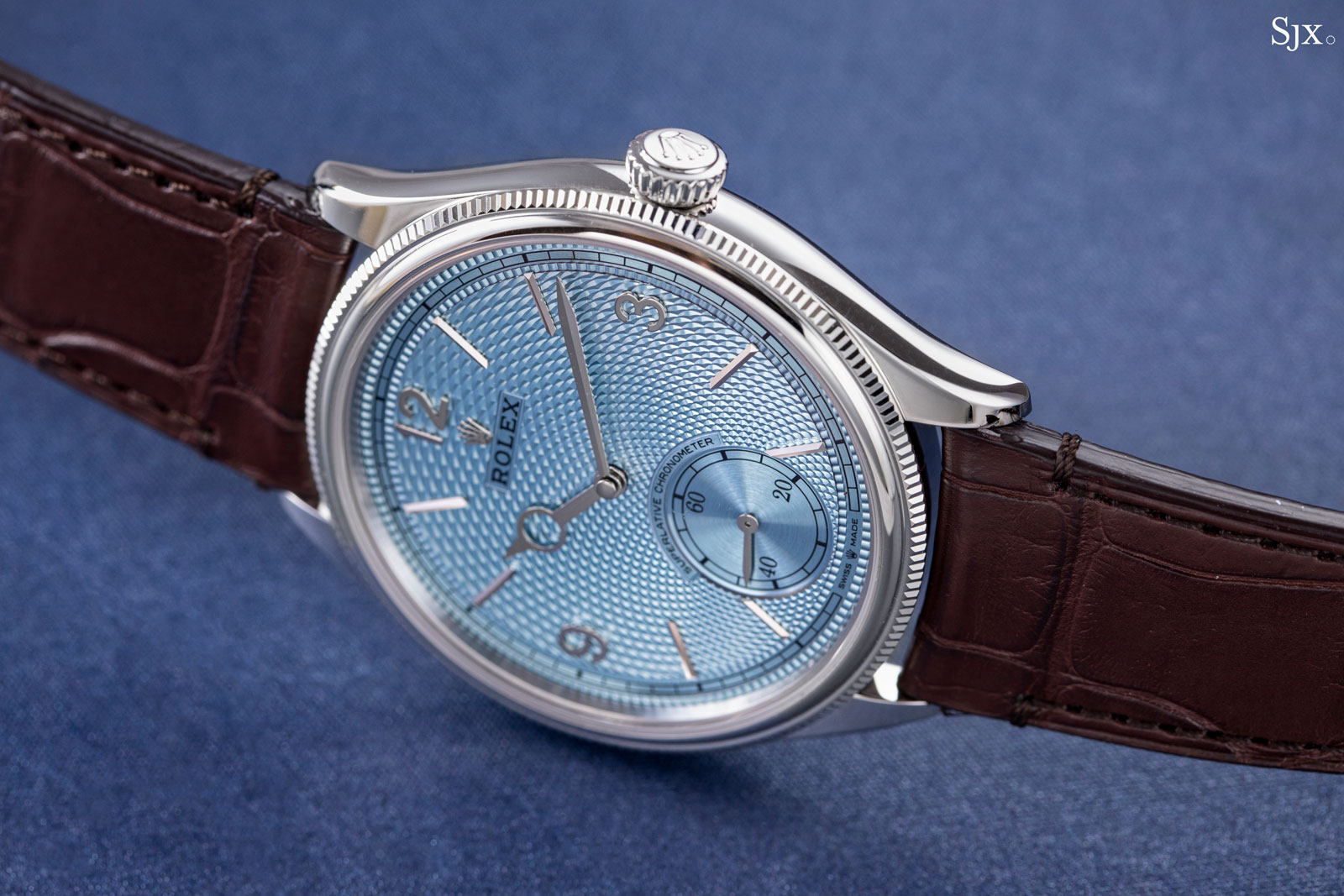
The quality of the case is, unsurprisingly, outstanding. It is not described as an Oyster case, but is an Oyster case for all intents and purposes.
Both the bezel and back feature the signature fluting that allow them to be screwed into the case middle, while the crown is screw down. As a result, the case is rated to 50 m, a significant depth for a dress watch.
Even though tonneau form of the Oyster doesn’t easily lend itself to a dress watch, the 1908 manages to be elegant and even refined.
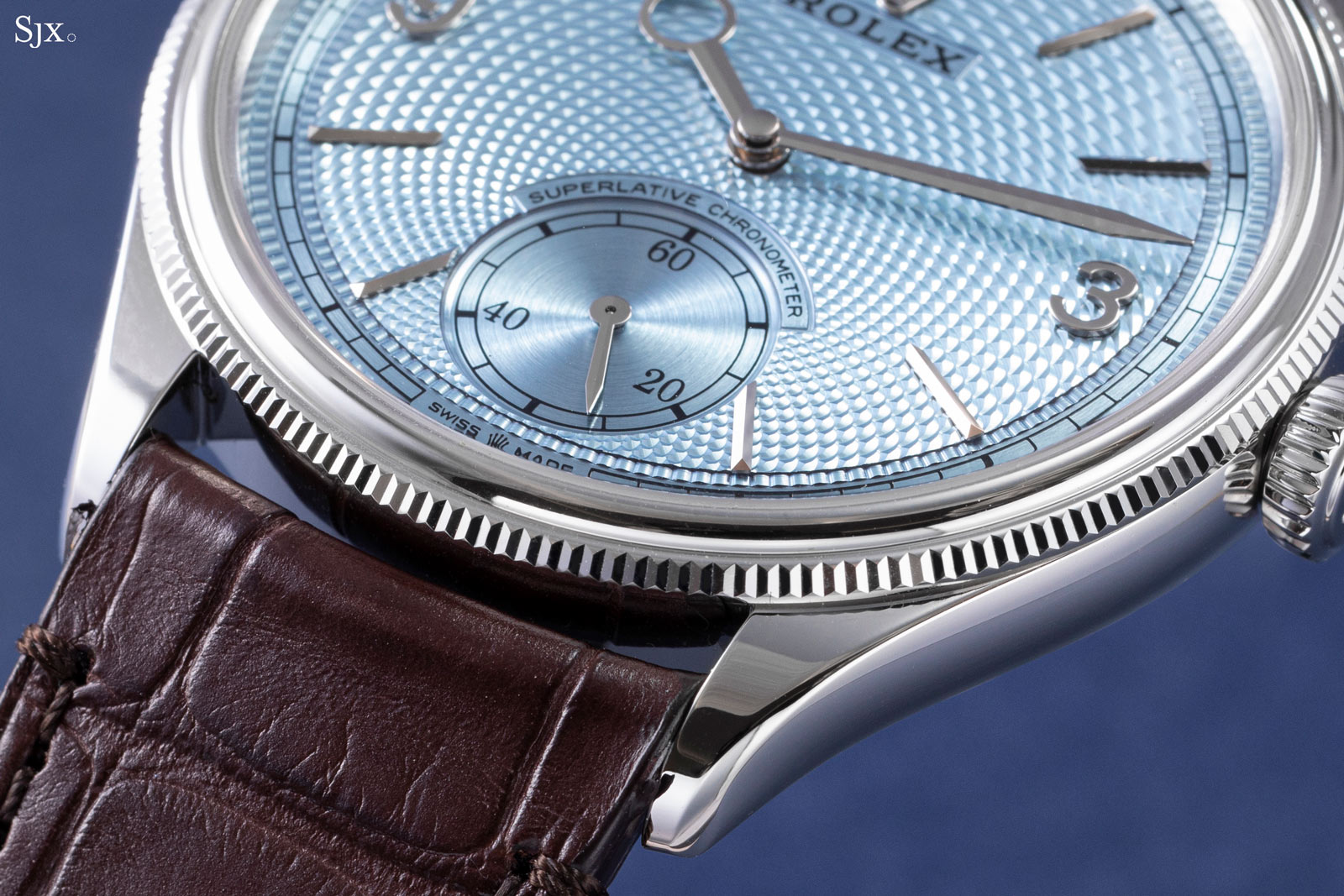
Sitting under the sapphire back is the cal. 7140, an all-new calibre created for the 1908. It’s a thin movement to fit the slim case, but still manages to incorporates all of the features standard in latest generation Rolex movements.
That includes a longish power reserve of 66 hours, a free-sprung balance wheel with a Syloxi hairspring in silicon, Chronergy escapement, and skeletonised escapement parts made of nickel-phosphorus alloy.
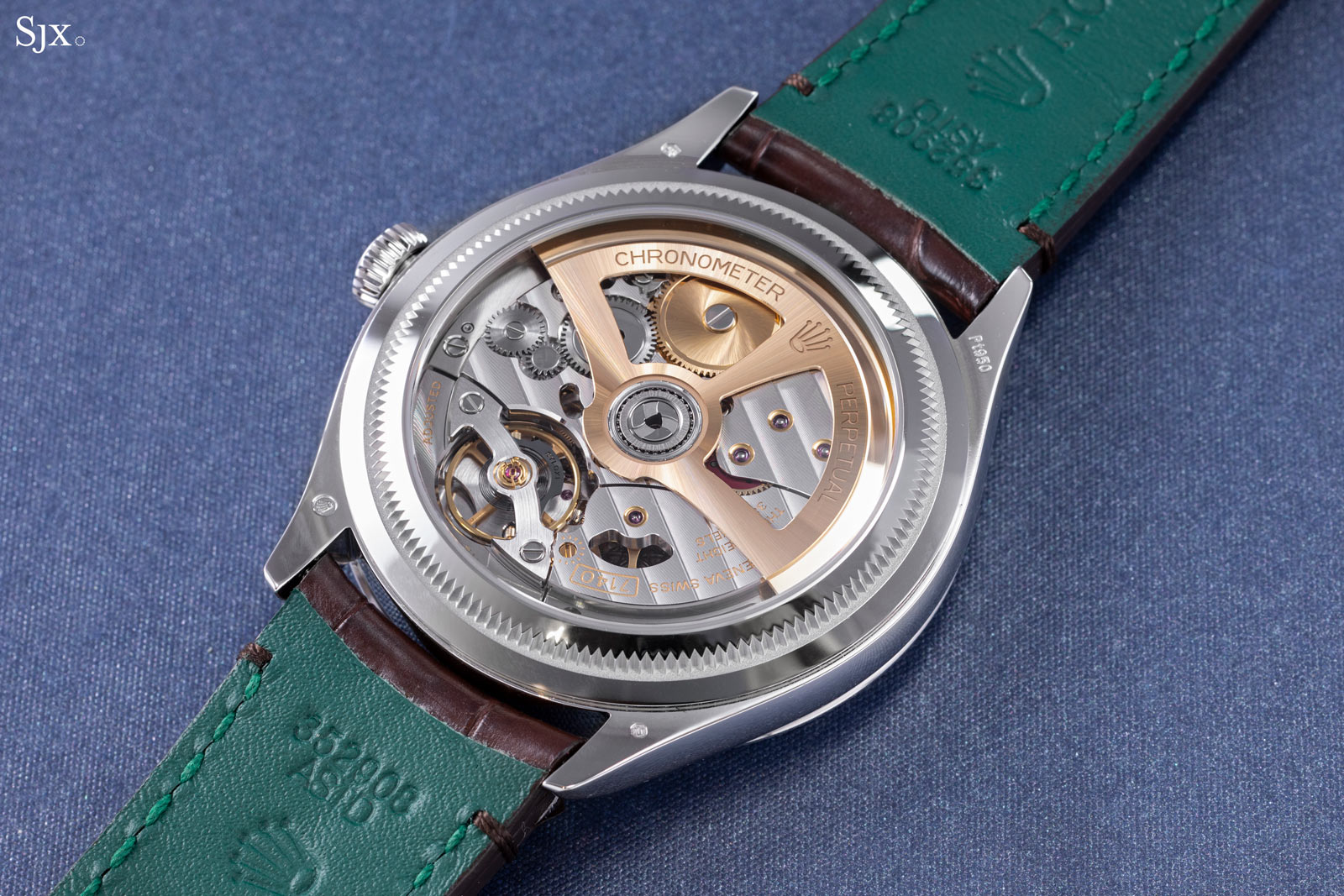
The movement also incorporates some notable design features, including a nifty gilded screw for regulation. Another is the gold chatons that are actually milled onto the bridges, an illustration of the impressive manufacturing techniques Rolex can muster.
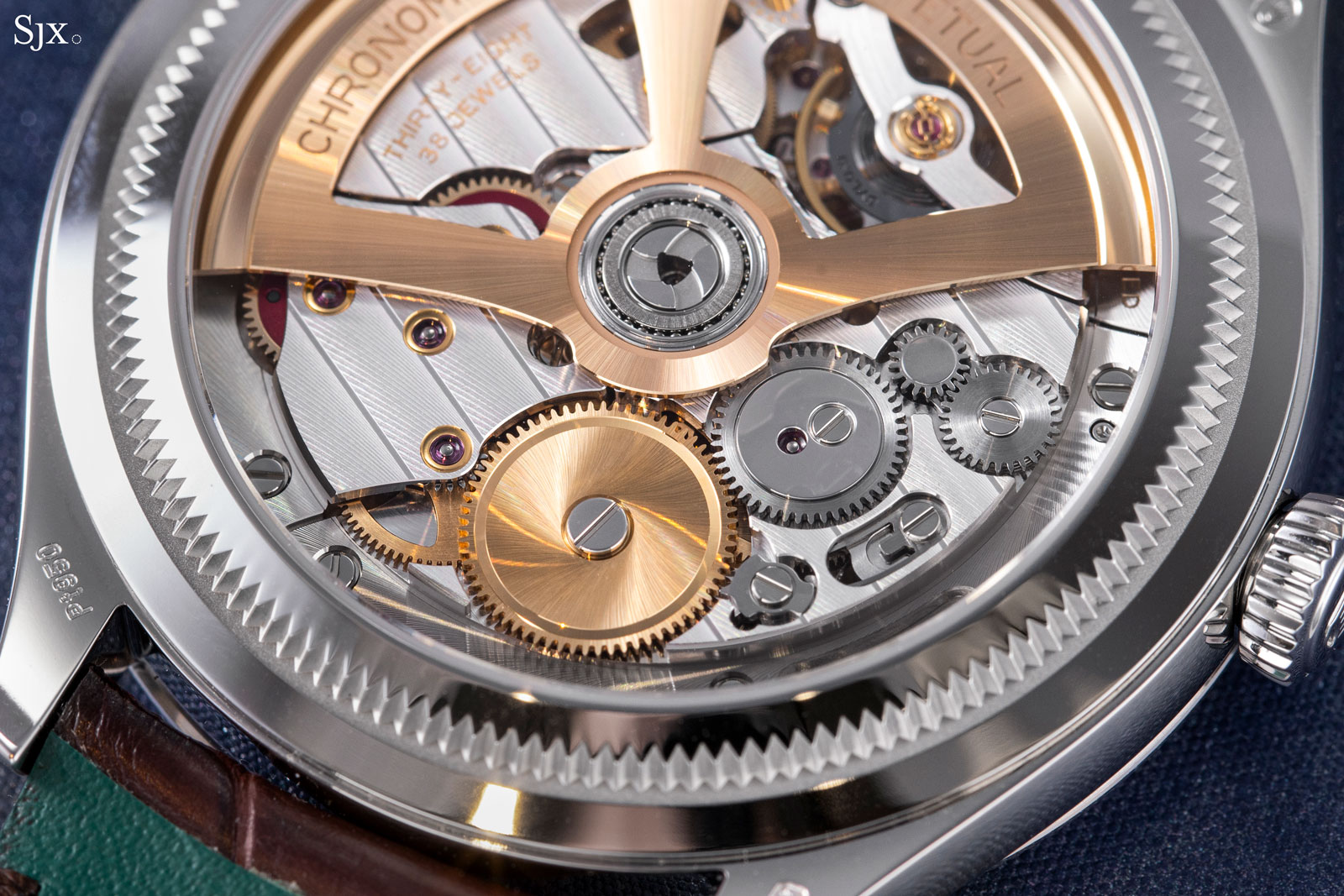
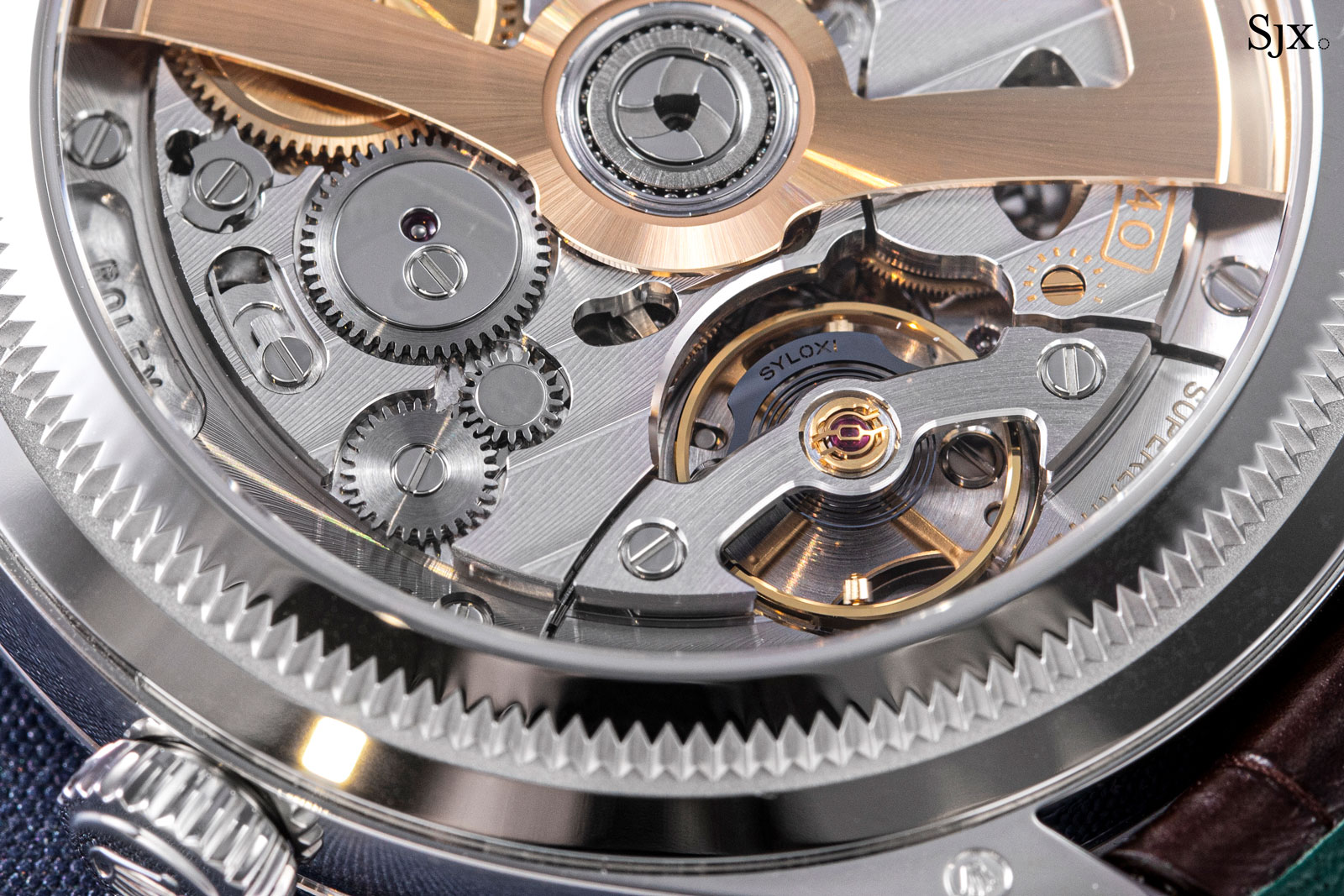
Like many of Rolex’s more recent movements, the cal. 7140 is also more decorative than past generations. Every component is grained or polished, resulting in a noticeably reflective movement. Even the screws have polished chamfers along their edges and slots.
The decoration is industrial, but it is exceedingly precise and clean. Moreover, the decoration has been thoughtfully designed to fit each component, which reflects the substantial effort put into the movement’s development.
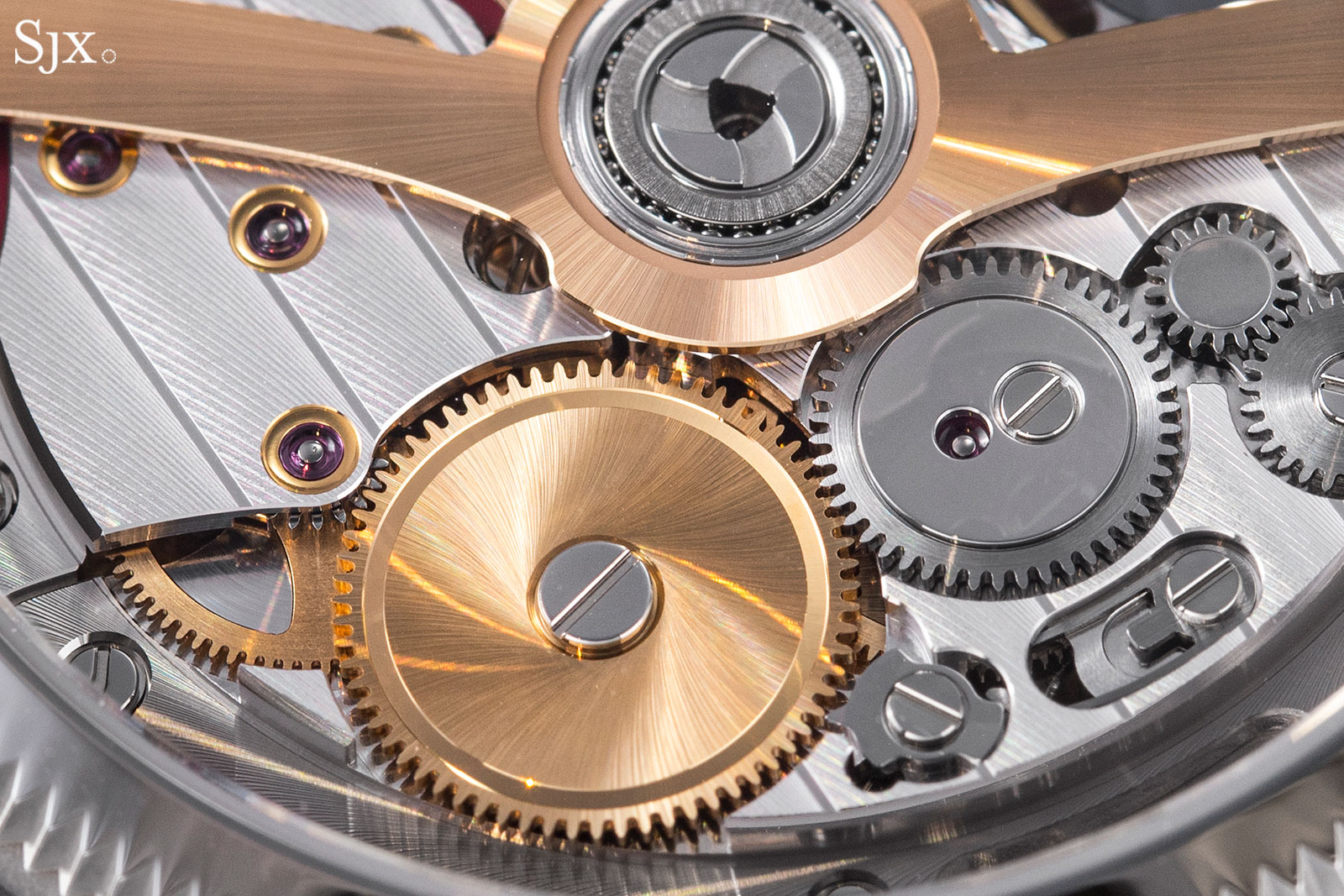
The barrel ratchet wheel with a spiral graining
Interestingly, the Côtes de Genève is done in a proprietary style with a pronounced, engraved border separating the stripes. This is the only aspect of the decoration I would have done differently, as the deeply grained striping doesn’t have the lustrous appearance of traditional Côtes de Genève.
Given that majority of the competition at this price point is also industrial, the cal. 7140 is on equal footing. In fact, it might even be superior because of the quality of the mechanically-applied decoration.
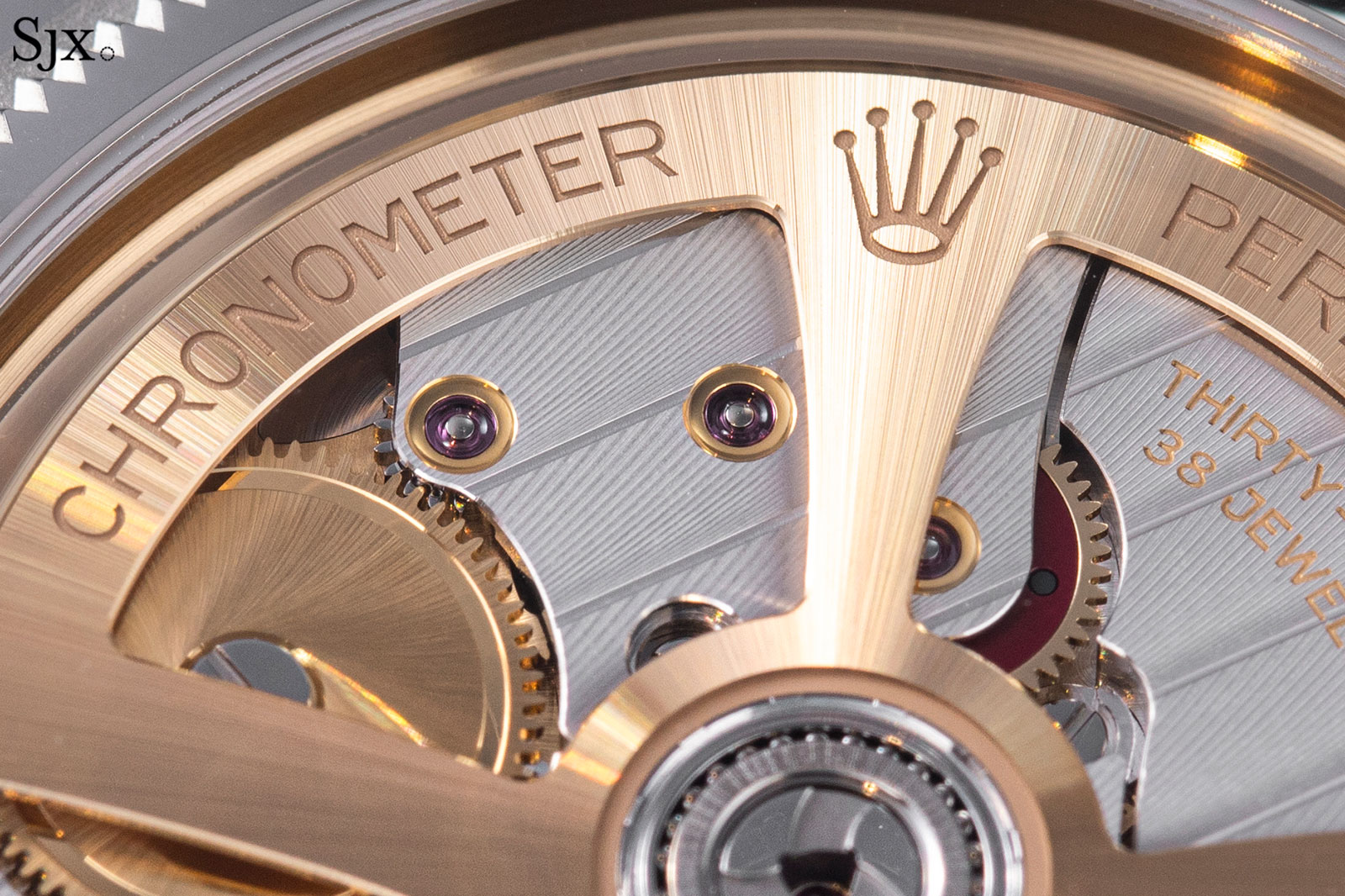
The Rolex-style striping on the bridges
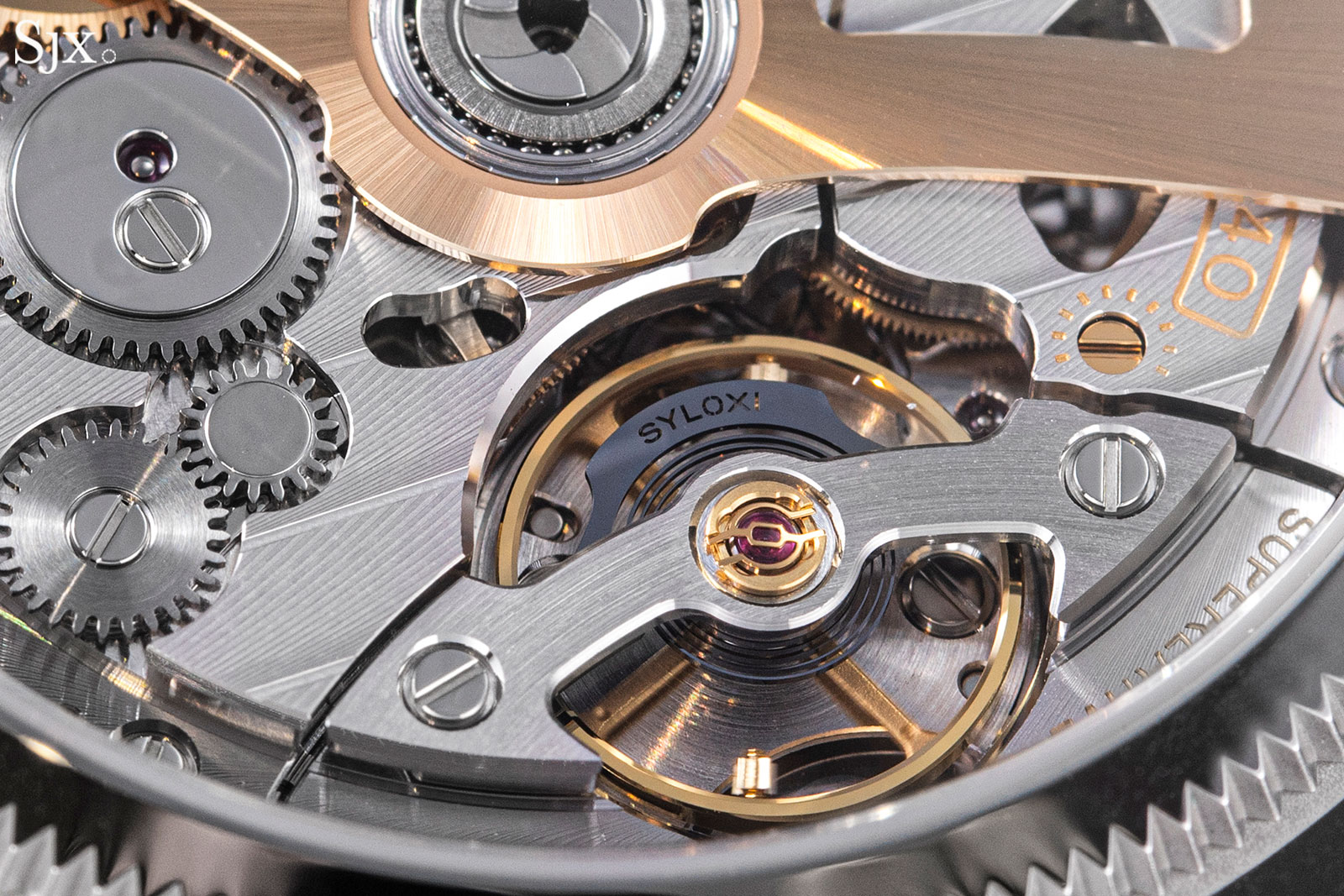
Concluding thoughts
The 1908 in platinum is more expensive than its gold counterpart, but substantially more appealing. Despite the higher price, it still offers value relative to the broader market by way of its high quality build, guilloche dial, and the fact that it’s platinum.
Key facts and price
Rolex Perpetual 1908
Ref. 52506
Diameter: 39 mm
Height: 9.5 mm
Material: Platinum
Crystal: Sapphire
Water resistance: 50 m
Movement: Cal. 7140
Features: Hours, minutes and sub-seconds
Frequency: 28,800 beats per hour (4 Hz)
Winding: Automatic
Power reserve: 66 hours
Strap: Alligator with folding clasp
Limited edition: No
Availability: Available at Rolex authorised dealers
Price: US$30,900; or 44,500 Singapore dollars
For more, visit Rolex.com.
Back to top.

